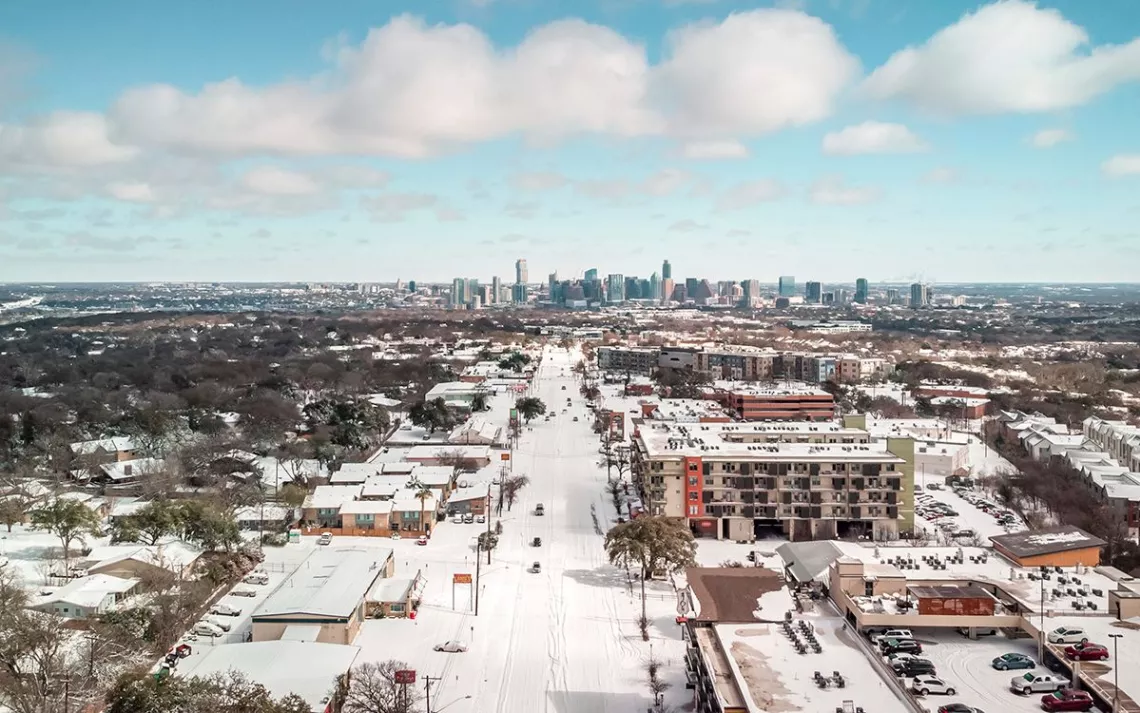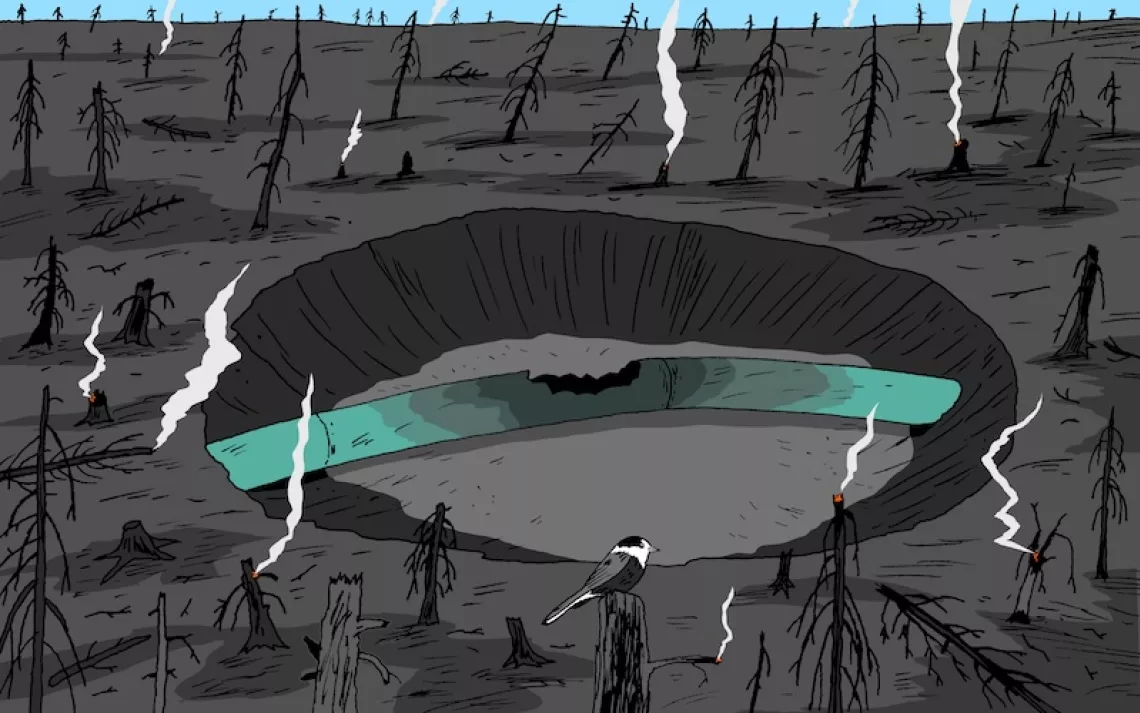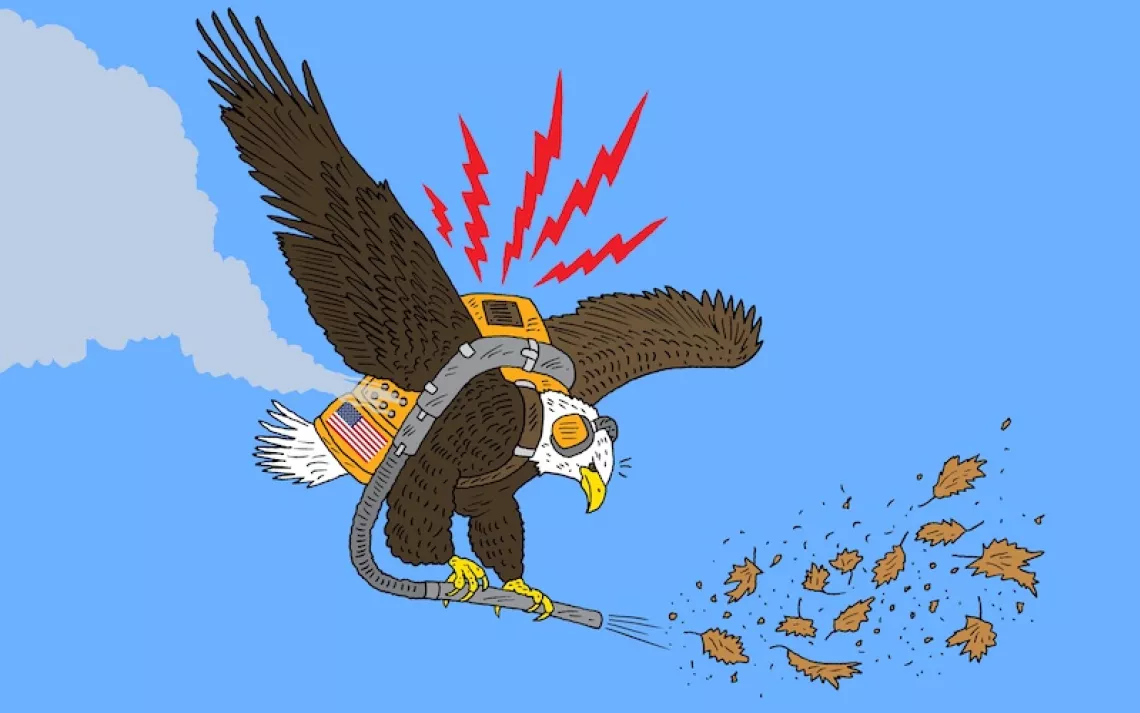Letter From the Texas Freeze
One writer’s dispatch from the Southwest’s ongoing climate disaster

South Lamar Boulevard in Austin | Photo by Pearcey Proper/AP
On the morning of February 18, five days into a record-breaking winter storm that left millions of Texans without power and water (and had Ted Cruz leaving the state for a vacation in Cancun), my husband and I were finally able to return to our condo a mile south of downtown Austin.
We had toughed it out without power or hot water at our place for 10 hours before my feet—which are susceptible to the cold in the best of circumstances because of mild spastic cerebral palsy—lost feeling. Watching tree branches fall and freeze from our second-story porch as a neighbor sledded down our steep driveway on a pool float, an Instagrammable moment became a perilous one as I investigated the uneven, ice-covered stairs at the side of our building with a little sob trapped in my throat—they looked not just treacherous but impassable, especially given my poor balance and irregular gait. We were only hours into this thing and some neighbors were already retreating to their cars for warmth and to charge devices. Compounding the situation was the fact that both my husband and I drive Honda Fits, compact cars perfect for zipping around in Austin's typical sunny weather. But on Tuesday, they were snowed in at the base of said steep driveway. With both our cellphones dying, we descended our stairs like a ladder and evacuated by foot to stay with friends half a mile away. We didn’t even think to take our toothbrushes.

Photo courtesy of Holly Holmes
We spent two nights sheltering in a high-rise near the Palmer Events Center, which had been transformed into a shelter for evacuees. This, we suspected, was why we had power through the first night, why we could eat potstickers and samosas and charge our phones, why we had reception in the first place. The darkness of the normally bustling South 1st Street laid out before us in the distance, the faint glow of freeway lights delineating a power outage that stretched as far as we could see out the window. The second night, we filled the bathtub and boiled water in response to a city-wide boil notice while watching the Serena Williams–Naomi Osaka semifinal at the Australian Open.
There’s something discordant about finding oneself smack in the middle of an unfolding national emergency: We’re all bystanders. My family members texting from afar. My elderly neighbor texting from our condo complex, where she was cuddling her cats under a blanket for warmth. An acquaintance posting on Twitter that she and her husband, after 40 hours without power, were tearing down the fence in their backyard to burn it for warmth. Weren’t we all just waiting to be rescued, if not by callous and incompetent politicians, then at least by warmer weather?
The second I clicked away from images of ceiling fans covered in icicles on CNN, there I was, hanging out with friends in a heated apartment, watching tennis as signs of trouble darted in and out of our periphery. Earlier that evening, when an icicle went crashing from the building, our host called from the other room, only half-joking, “Is everyone OK?”
Sadly, as we Texans know all too well, everyone is most definitely not OK. My husband and I had been lucky to have friends take us in. The 144 straight hours during which Austinites weathered below-freezing temperatures makes a record in the city, and the blackouts and associated dangers have killed at least 30 people statewide, according to The Washington Post—a number that continues to climb. Dozens have gotten sick or been hospitalized from carbon monoxide poisoning, from running stoves and other heaters indoors.
As we had after the onset of the coronavirus pandemic, and the January attack on the Capitol, my friends and I found ourselves doubting the government’s ability to respond to a disaster it seems able only to exacerbate, cynical about just how bad things would get before they made a lasting turn for the better. Texas’s attitude toward snow removal—described by some as “God put it there; God will take it away”—has failed the state this time around, making it feel like we’re steering toward rather than away from a looming iceberg. It took a few days of cold weather, the newest tip of the climate change iceberg, to bring one of the biggest energy economies on the planet to a grinding halt.
Driving us home Thursday morning, our friend stopped her four-wheel drive for gas at three different stations. The power was out at one. At another, on South Congress and Riverside, the vehicles we thought were filling up at the pumps were, in fact, covered in icicles. At a Texaco on Oltorf and South 1st, a note on a pump read “Super Only,” but alas, the station was out of even that. Once home, my husband and I spent the afternoon watching YouTube videos on how to siphon gas, should we need to fill our friend’s tank from one of our snow-covered Honda Fits.
Conservative politicians in Texas have been swift to cast blame for the outages. As early as Monday, some were falsely claiming frozen wind turbines were to blame. Energy experts in the state were swift to debunk the theory. The drop in gas production, not renewable energy, appears to be the primary culprit for the days-long blackouts.
This hasn’t stopped Republicans in the Lone Star State from continuing to peddle false claims about renewables. On Tuesday evening, Chip Roy, a Republican who represents our congressional district, the 21st, issued a statement over email that consoled Texans without power or water but also went on to obliquely deride renewable energy, writing, “Radical ideologies have politicized energy policy at the state and federal level in recent years.”
The line of attack from the right is clear, even if the wording in statements like Roy’s are not: Renewable energy is the boogeyman. The friend who forwarded the representative’s email to my husband had already gone 30 hours without power. Of the statement, she texted, “It kept me burning for a while.”
It wasn’t just Roy (a former chief of staff to none other than Cruz) taking this approach. On Fox, Governor Greg Abbott, another Republican, was blaming the catastrophe on solar and wind energy, telling Sean Hannity that “this shows how the Green New Deal would be a deadly deal for the United States.” Meanwhile, on Twitter, Dan Crenshaw, the GOP representative from the state’s 2nd Congressional District, was also echoing the governor, claiming “frozen wind turbines” were a primary cause of what was happening.
It didn’t take long for such arguments’ disingenuousness to be revealed. As the Texas Tribune explained in a piece helpfully headlined No, Frozen Wind Turbines Aren’t the Main Culprit for Texas’ Power Outages, it is in fact the natural gas industry that has been “producing significantly less power than normal” during the crisis. The state had also failed to properly “winterize” all of its power sources, even though they’d known of the need to do so since a major freeze in 2011. As for the Green New Deal, it of course has never been passed into law (nor does anything like it exist at the state level, where Republicans control the governor’s mansion, the legislature, and the courts). But, sadly, this is the way Republican politicians operate here in Texas: fail to govern and then place the blame on progressives, who have zero power in the state.
Regardless of our incompetent state leaders and the climate-denying fictions they hawk, the true stories, from friends around town, are largely frightening: I've received many accounts of long, dull days bundled up without heat. There’s the friend who’s been shuttling loved ones to safety with a hammer in her backseat to knock off the ice accumulating in the wheel wells of her 4Runner (“I call it my driving hammer”), and her sister with rheumatoid arthritis whose house was so cold Wednesday her memory foam mattress froze. There’s the colleague doing jumping jacks over Zoom with a pal to keep her warm and a friend who walked 10 miles roundtrip to pick up essential items only to come home empty-handed. “At least we still have our high spirits,” he posted.
The image that sticks in my mind is of our neighbor—the one sledding down the driveway on a pool float in the early moments of this crisis—scraping off her windshield using a pair of broken barbecue tongs and a plastic knife before evacuating, her one-eyed Boston terrier, Willie, in the passenger seat in a blue down coat.
I’m reminded, too, of an Instagram video my sister sent Thursday afternoon featuring two skater boys cartoonishly slipping on black ice in their driveway. The caption reads "Texans weren’t prepared for ice…" followed by a skull emoji and the crying/laughing emoji. I understand where my sister is coming from: She lives in Utah, a place known for its epic powder but also its plows. On the way to school every morning, we passed a mountain of municipal road salt. The power went out every now and again, but never for more than a few hours. In Utah, I never had to climb over fallen tree branches or ascend stairs callused with ice to get to my condo.
Still, if Texans were unprepared, it’s because our government failed us. Failed to adequately warn us. Failed to design a power grid that prioritized safety over deregulation, one that treated us not as consumers or even customers but as people—people who, as one friend put it, are tired of being resilient. Because, of course, so many of us have been bystanders. Some of us have been capable of courage and, yes, heroism, even if all that has meant is staying alive and finding ways to stay safe.
On Thursday afternoon, the temperature inched above freezing and friends started posting pictures not of ice and snow but of flooded living rooms. At the time, authorities claimed 90 percent of Austin had power, but we were simultaneously getting word that the Costco serving South Austin had shut down because it didn’t have water. Meanwhile, the darkened H-E-B blocks from us, on Oltorf, had a line wrapping around the building. The normally bustling Whataburger down the street remains without power.
With the weather expected to warm up this weekend—the forecast calls for highs in the 40s on Friday and 50s on Saturday—the freeze may be nearing its conclusion. But the thaw, once it begins, will surely present new perils.
 The Magazine of The Sierra Club
The Magazine of The Sierra Club






